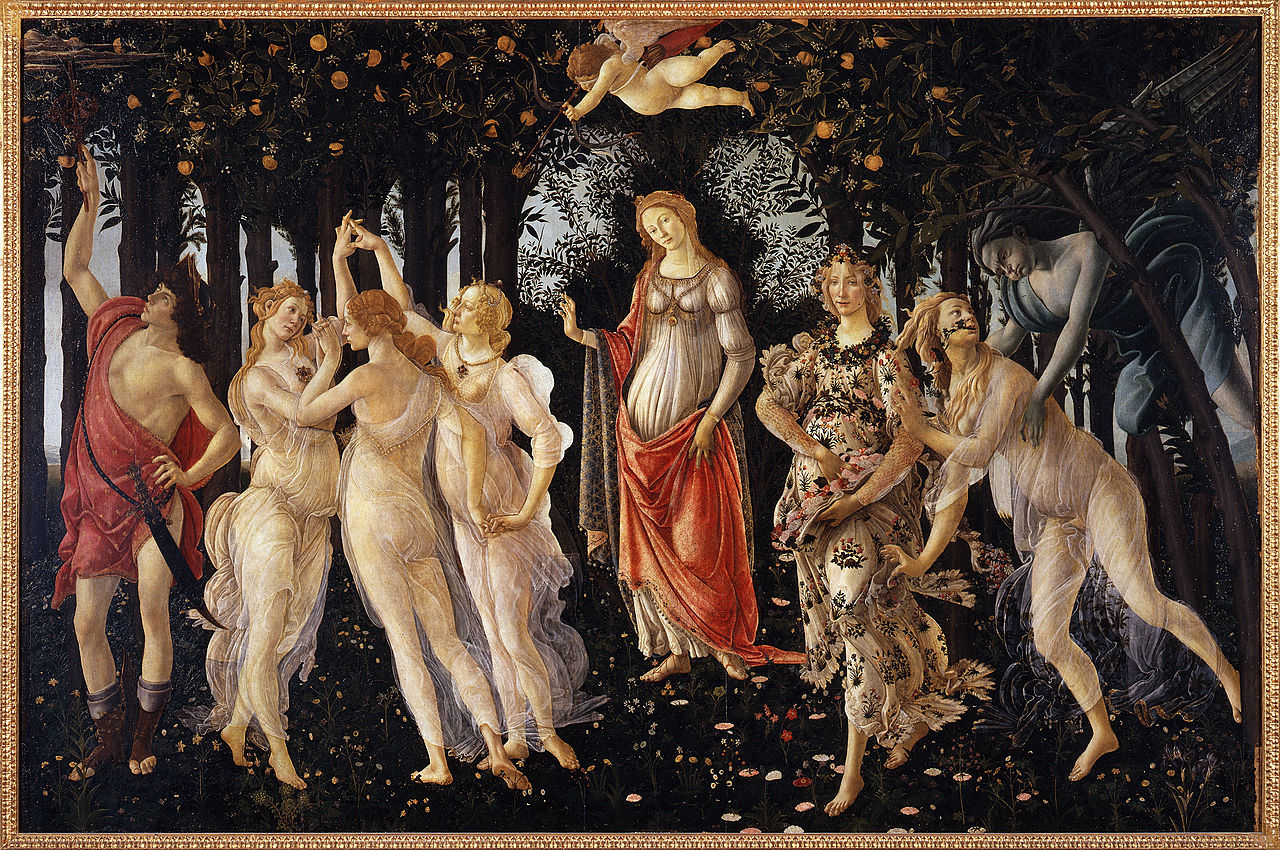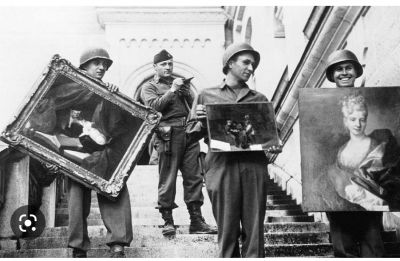Durante la Seconda Guerra Mondiale, molte opere d'arte, soprattutto del Rinascimento, furono nascoste per evitare di essere distrutte dai militari tedeschi e/o italiani. Nel villaggio di Montegufoni, vi era una villa disabitata in quanto appartenente ad uno scrittore inglese dichiarato dello stato ed esiliato in Svizzera, lasci la villa in custodia al suo autista, Guido Masti. La villa era il luogo perfetto per nascondere i quadri perché vuota e isolata. Purtroppo la villa fu bombardata e furono distrutti più di 300 capolavori. Molti anni dopo, si scoprì che molti dipinti furono portati in Austria durante la guerra e per questo abbiamo ancora molti dipinti di artisti come Botticelli.
Adolf Hitler, former art student, head of the Nazi party, and dictator of Germany, along with Benito Mussolini, dictator of Italy and founder of the fascist party, became allies during WWII. In 1938, one year before the onset of war, they toured the art galleries of Florence, Italy together. Little did the world know that this war would see the most extensive looting of art in history by the Germans under Hitler.
When war broke out, administrators, art historians and the librarians of Florence’s art galleries began to look for places to hide Renaissance paintings. The propaganda from Germany was that enemies would be looking to confiscate the art to sell or destroy. Thousands of works were removed from the galleries and distributed amongst villas and castles throughout remote areas of the Tuscan countryside. What couldn’t be moved, such as large sculptural pieces like Michelangelo’s “David”, were enclosed in brick structures.
Giovanni Poggi, superintendent of Florentine galleries, the man responsible for the return of the stolen Mona Lisa, was charged with spreading the works of art to various towns, including, Poggio a Caiano, Camaldoli, Scarperia, and Poppi.
In the town of Montegufoni was a villa inhabited by British writer, Sir George Sitwell, who purchased and restored it in 1909. In 1942, Italy exiled all “enemies of the state” which meant sending Sir George to Switzerland leaving his driver, Guido Masti, in charge of the villa. With its many rooms and watchtower, it was the perfect place to hide precious paintings. In all, 246 priceless works, 25 from the Uffizi, 11 from the Palatine Gallery in the Pitti Palace, 188 from Galleria dell’Accademia, and 22 from the Museo de SanMarco, were hidden within its walls. Works of Giotto, Cimabue, and Botticelli amongst others were “hidden” in plain sight.
The summer of 1943 brought the fall of Mussolini to the hands of Italian partisans. Italy surrendered making Germany its enemy and Italy an occupied territory. In 1944, German paratroopers took over the villa threatening to rid the “useless” artworks. Guido Masti was able to distract them with alcohol, wine, and music while trying unsuccessfully to contact Poggi for assistance.
Cesare Fasola, the Uffizi librarian, was sent from Florence to bring some of the works back to the Gallery from Montegufoni mistakenly thinking Florence was now safe from bombing. He could not find any means of transport and while walking through war zones en route, found the Villa Bossi-Pucci in Montaguana destroyed along with it 300 works of art. One-third of Florence had been destroyed and the Ponte Vecchio was the only bridge not blown up by the Germans as they retreated North.
Allied forces from India under the British Army, New Zealand, and Canadian regiments, eventually came into Montegufoni along with a BBC war correspondent who relayed news about the hidden works of art. In America, the “Monuments Men '' was an Army unit assembled of museum directors, curators, art historians, and an architect to find and return works of art from war zones. In this particular case, they were up against the German Kunstschutz, who under the guise of “protecting works of art during wartime”, stole 600 works of art from Tuscany and hid them at the Austrian border in salt mines. With handwritten IOUs and documents the “Monuments Men” set out to discover what and where these works were hidden and return them to Florence.
The owner of the Villa at Montegufoni, Sir George Sitwell, never returned since he passed away in 1943 while in exile in Switzerland. Guido Masti lived there until his death in 1980 and was recognized for his heroism in 1964. After all, he was in charge of protecting some of the most famous works of art from the Renaissance, such as Sandro Botticelli’s “Primavera” which eventually was returned to the Uffizi Gallery along with Botticelli’s “Birth of Venus”.
In July 2022, two climate activists glued themselves to the “Primavera”, a painting containing hundreds of species of flora, also called “Allegory of Spring”. Thankfully it was unharmed since it was encased in protective glass.
If your interest has been piqued, I suggest reading any novel written by Laura Morelli, Art Historian, and author of historical fiction. Her “Botticelli at War” online video was my inspiration for this article. Also check out the 2014 movie, “The Monuments Men”, directed by and starring George Clooney. It depicts, albeit loosely, the group of men searching for and recovering the stolen art from Florence in WWII.
Part of our cultural history has become yet another casualty of war.




